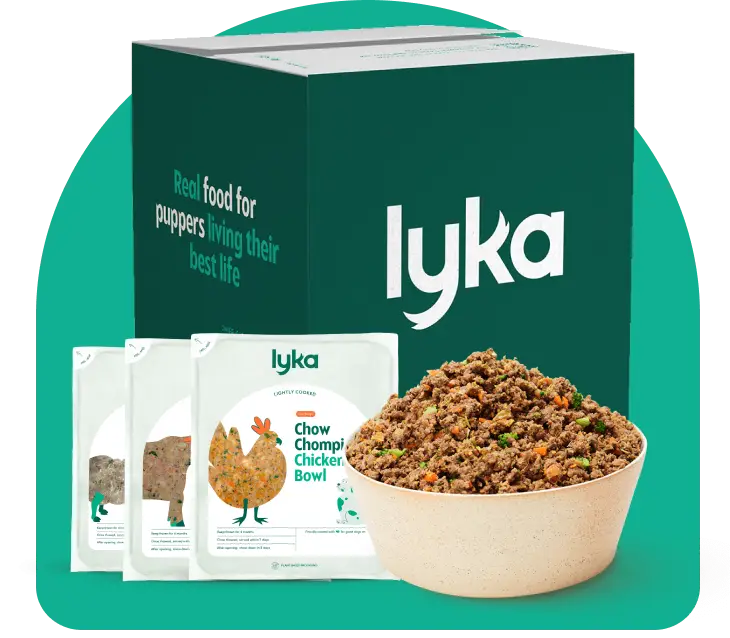The lowdown on processed pet food types

By Anna Podolsky

When choosing what pet food types are the best to feed your four-legged friend, there are a number of factors that should guide your decision. The amount of processing is one of them.
When we humans make our daily food choices, we try and stay away from ultra-processed and packaged foods. We’ve heard from doctors that nourishing our bodies with fresh foods is the best thing for our health. This same logic can be transferred to our pets.
What exactly is food processing?
Food processing refers to the mechanical or chemical operations used on food in order to change or preserve it.1 Heat processing and chemical additives are common processing methods in pet food.
Why is processing good? Processing kills bacteria and pathogens in the food, decreasing risks of food-borne illnesses.
Why is processing bad? Processing kills natural nutrients, which then need to be added back with artificial ingredients. For example, food that is labelled primarily “beef”, but has been highly processed, might have a lower quantity of nutrients coming from the beef itself, then you think.
A range of processing methods are used for different pet food types, from highly processed dry foods to unprocessed raw foods. Each method has their positives and negatives, and the key is to balance these. The balance of minimising food-borne risks, while maximising natural nutrient retention is something that’s important to us here at Lyka Pet Food.
How are different pet foods processed?
Dry food
Dry food undergoes a process called extrusion. The food is cooked at a very high heat, between 100 and 200 degrees Celsius, and then dried by re-heating it, to up to 100 degrees Celsius. After this, it is typically sprayed with flavour enhancers and/ or preservatives.2
Pros:
Dry food can be stored outside of the fridge, making it convenient to buy and use
Because of the shape of kibble, the feeding process is “mess free”
Cons:
Natural vitamins and minerals are lost during the heating process, so typically artificial ones added in their place
Because of the high heat processing, the moisture levels of the food are very low, which may make it harder for pets to stay hydrated
The food is not fresh: usually, dry foods are shelf stable for many (many!) years.
Because of the processing method, less nutritional ingredients like legumes or additions like beet pulp are added to provide the necessary texture. Read our article about grain-free dry food.
Canned food
Ingredients are typically cooked at lower temperatures than dry food and then filled into cans. Additives are used to keep the food shelf stable. Finally, cans must be heat sterilized to control harmful bacteria that may grow while they are distributed and stored. This is done by heating the cans to a minimum of 116 degrees Celsius. 3
Pros:
Canned food can be stored outside of the fridge, making it convenient to buy and use
Canned food has higher moisture levels than dry food, helping pets stay hydrated
Cons:
As with dry food, natural vitamins and minerals are lost during the heating process, so typically artificial ones added in their place
The food is not fresh: usually canned foods are shelf stable for years, although typically less than dry foods.
Chilled food
There are many different types of chilled foods such as mince, loafs, rolls and chunks, and the processing methods vary between them. In general, they are less processed than canned foods, as they don’t need to go under heat sterilisation. However, because they are manufactured to withstand long expiry dates, they usually contain artificial preservatives.
Pros:
They have higher moisture levels than dry foods, helping pets stay hydrated
Cons:
Natural vitamins and minerals are lost throughout time in storage, so typically artificial ones added in their place
The food is not fresh: usually chilled foods are shelf stable for anywhere between months and years.
Raw food
Raw foods undergo minimal processing: the ingredients are cut, mixed together and refrigerated or frozen, ready for consumption.
Pros:
Natural nutrients are retained given the food goes under minimal processing
Raw food has higher moisture levels than dry foods, helping pets stay hydrated
Cons:
The risk of pathogen contamination (such as E. coli and salmonella) increases significantly compared to other foods, as no processing methods are used to kill bacteria. The risks concern both pets eating the food, and owners handling the food.4
Not all dogs can handle eating raw food, and some may get sick after it
Some types of raw food may not be specifically balanced to contain all the nutrients needed for pets to thrive
Lyka Pet Food
Lyka is gently cooked at low temperatures to retain maximum nutrients and minimise the risk presented by harmful pathogens. Our food is prepared on order, so your dog will be eating it just days after it has been made. Our recipes are designed by our in-house vet, Dr Matthew Muir, to ensure that they are complete and balanced for all dogs.
Pros:
Natural nutrients are retained due to minimal processing level
The food is freshly made days before delivery without the need for artificial preservatives
Safe from pathogen contamination, as bacteria are killed during the light cooking
Cons:
Your dog might not want to eat anything else!
Lyka: the fresh pet food that your pup will love
All of our recipes at Lyka Pet Food are minimally processed, so we retain the natural nutrients of the ingredients that we put into our food. Head to lyka.com.au to see the fresh ingredients that go into every pouch, and order your Starter Box today.
1 English Oxford Dictionaries: Food Processing Definition. Retrieved from: https://en.oxforddictionaries.com/definition/food_processing
2 Michael S. Hand et al. (2010) Small Animal Clinical Nutrition, 5th Edition. Mark Morris Institute
3 The Canning Process. Retrieved from: http://www.mealtime.org/farm-to-table/the-canning-process.aspx
4 Nemser S, Doran T, et al. Investigation of Listeria, Salmonella, and Toxigenic Escherichia coli in Various Pet Foods. Foodborne Pathog Dis 2014; 11:706-709.







